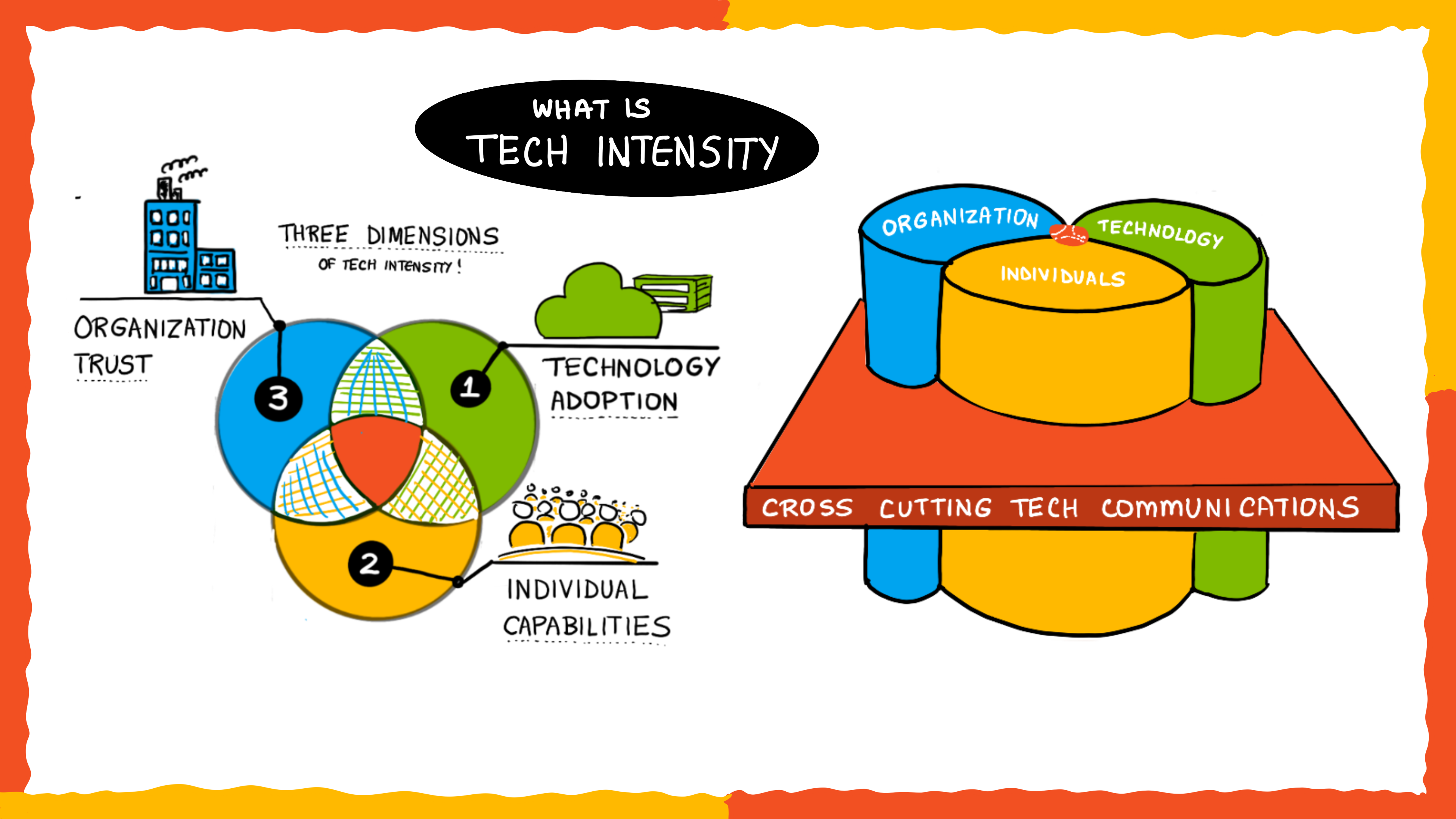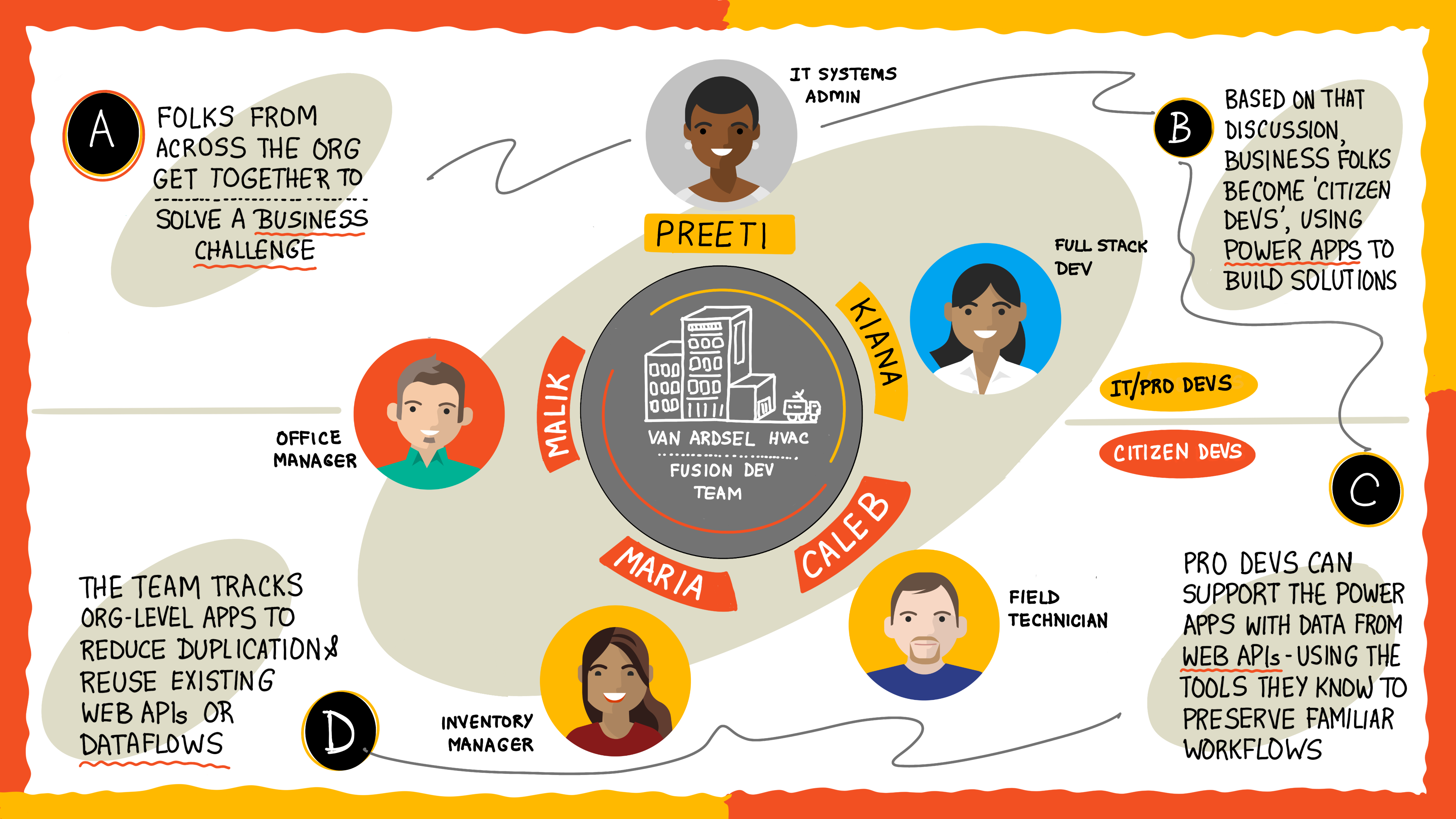What is tech intensity?
Malik explains that tech intensity at a company consists of three dimensions:
- Adoption of technology
- Individual capability to use technology
- Organizational trust in deploying technology
Each dimension of tech intensity builds upon the others.
Malik draws two diagrams on the whiteboard. The first is a Venn diagram showing that tech intensity lies at the intersection of company-wide technology adoption, individual capability to use technology, and organizational trust in deploying it. The greater the overlap, the higher the company’s tech intensity.
The second diagram presents a 3D view that illustrates how increasing tech intensity depends on cross-functional communication across departments.
“Looking at it another way,” Malik explains, “tech intensity is about breaking down silos and enabling cross-team productivity.”
Caleb raises his hand:
“But here’s what I don’t get. My field technicians can work with Maria’s inventory team to improve warehouse inventory. But where does technology come in if we don’t involve Kiana’s development team?”
Maria nods:
“I’ve been studying Power Apps in my spare time. It helps business professionals build apps that are easy to create and deploy.”
Kiana responds:
“Those users are Citizen Developers—business professionals who use their domain knowledge and existing data to create applications with Power Apps.”
She continues:
“And when Citizen Developers build apps tailored to their needs, my team can focus on reusable components and advanced logic. That eases our backlog and supports them with the right data and capabilities.”
Preeti smiles:
“And Power Apps runs from our Microsoft 365 tenant, so it’s fully managed by IT from the start.”
Fusion development teams
The team identifies how they can collaborate as a fusion development team:
- Cross-functional experts identify and collaborate on solutions to business-wide problems
- Business users create Microsoft Power Apps applications that directly solve their needs
- Developers focus on reusable components and complex business logic
- IT manages secure deployment and access
The diagram shows how VanArsdel’s fusion development team is organized. Each role maps to a fusion development responsibility, highlighting how business professionals and technology professionals work together to build better apps, faster.
A flowchart on the graphic outlines three key steps in the fusion development process:
- Kickoff – A Citizen Developer identifies a problem and forms a team.
- Planning – The team collaborates to determine how to solve the problem.
- Execution – Citizen Developers use Power Apps and Professional Developers use the tools they know to build the solution.
Malik smiles:
“This is a fusion development team: Citizen Developers and Professional Developers working together to increase VanArsdel’s tech intensity!”
Preeti adds:
“And everyone uses tools they’re already comfortable with. That makes us more productive without a steep learning curve.”
Malik turns back to the group:
“Now, what exactly is this Field Inventory Management System we need to figure out?”

